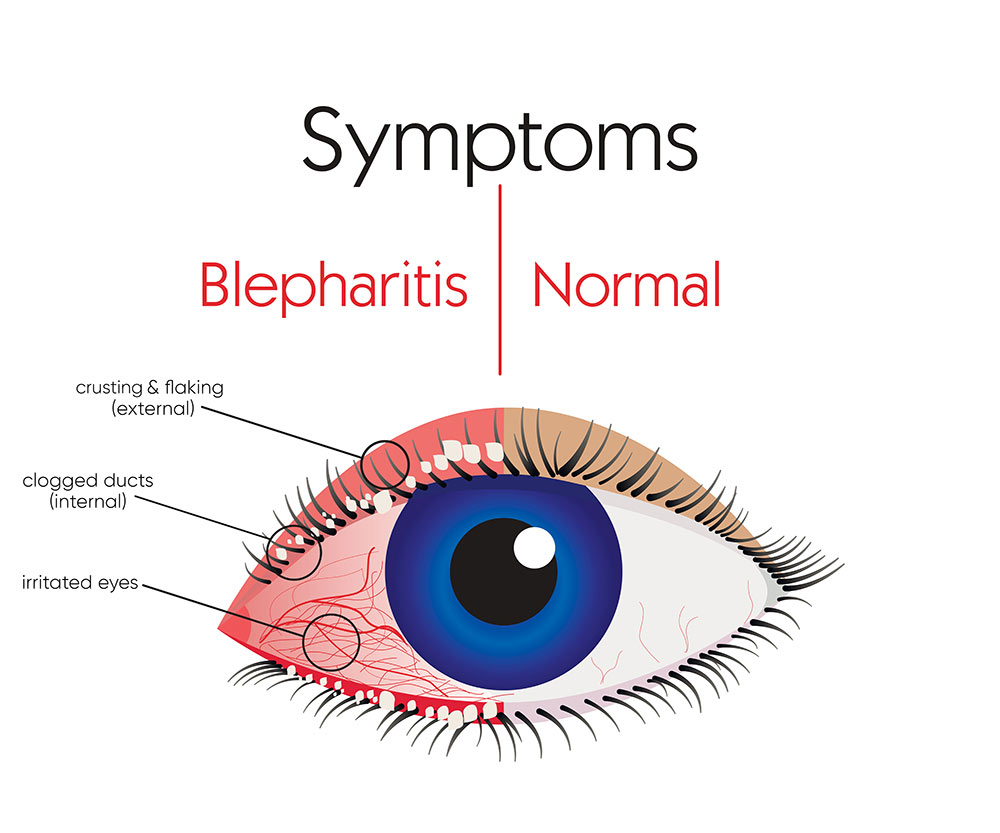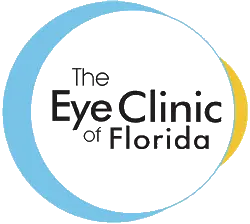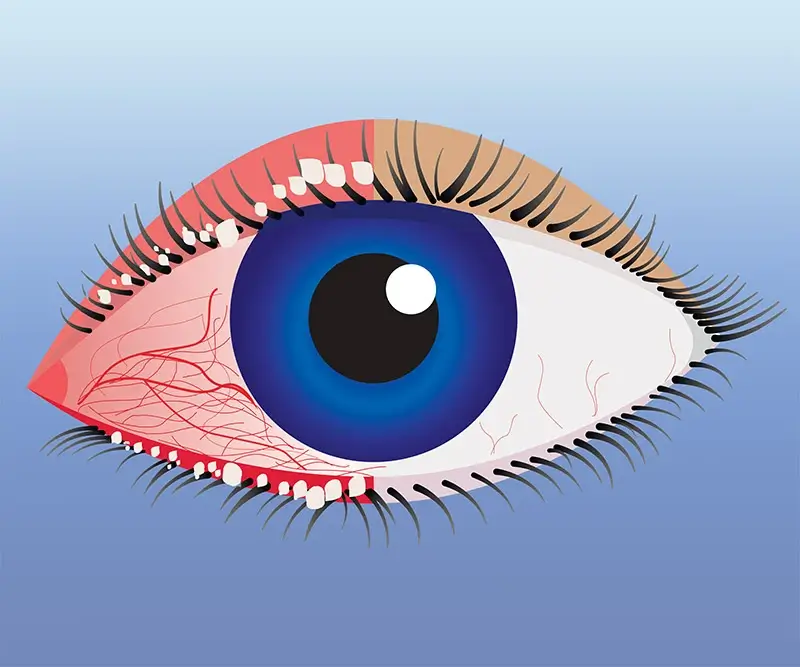What Is Blepharitis?
Blepharitis is an inflammation of the eyelids. It is one of the most common conditions we see. It’s also one of the more common conditions missed by other doctors. Blepharitis is often confused with dry eye or allergy. There are two main categories of blepharitis: internal and external.

Internal blepharitis or meibomian gland disease is the more common type. In this condition, the inflamed meibomian glands in the eye produce a thick oil that disturbs the tear film and causes the lid to swell and be sticky. Think of your view through a windshield if there was suntan oil or lotion on it! It blurs the vision. Normally, the thin oil produced by the meibomian glands keeps our tear film from evaporating. The diseased, thick oil caused by blepharitis destabilizes the tear film. This condition is often confused with dry eye! The abnormally thick oil also constipates the oil ducts. The body doesn’t like this oil stuck there, resulting in inflammation and swelling of the lid.
Patients who we see here in Tampa, are frequently frustrated by the condition because they get treated with eye drops, only to find that the condition returns after the drops are stopped. Doctors get frustrated because the patients aren’t cured. It’s best to think of internal blepharitis as a chronic skin disease called ocular rosacea, so long-term strategies work best to keep patients happy.
Certain glaucoma medicines called prostaglandin analogs can also cause blepharitis. Latanoprost, Xalatan, Travatan, Lumigan, Zioptan, Rocklatan, and Vyzulta are a few of their names. They are some of the most commonly used medicines for glaucoma. They work by inciting mild inflammation to lower the pressure in the eye. However, the inflammation in the lid can be problematic. At The Eye Clinic of Florida, in Tampa, we have many other good options for getting off of these types of medicines.
How is internal blepharitis (meibomian gland disease) treated?
While treating flare-ups with antibiotic-steroid eye drops, it’s good to start thinking long-term and get those treatments started.
Instead of treating each flare-up, there are simple things that one can do to suppress this chronic condition.
1. Chronic low-dose oral Doxycycline or Azithromycin. These two drugs are used for their anti-inflammatory effect, not their antibiotic effect.
- Doxycycline can be used once a day by mouth, and it stops the inflammation and lid collagen from destroying enzymes that are produced by the overgrowth of normal lid bacteria.
- Azithromycin can be taken orally just once a week! Studies have confirmed that the low doses of each do not contribute to antibiotic resistance. Either medicine thins the thick oil secretions of blepharitis or quiets the oil gland inflammation. For many, a nice side effect is less facial redness.
2. MiBoFlo. This is a great option for tough cases.
For many, the thick oil secretions won’t come out on their own. I used to recommend hot compresses on the lid, but most people cannot perform them effectively. MIBO is a procedure in which the lids are warmed and the oil glands are compressed to express the blocked, thick, or dried oil that is backing things up. Think of unblocking that toothpaste tube with dried toothpaste on the end.
It’s important to keep things flowing. Just like a blocked milk gland, if it remains blocked for long, the backpressure kills the milk gland. Atrophy or gland destruction can lead to horrible dry eyes later in life, so it’s important to keep the flow going!
MiBo usually doesn’t need to be done chronically — maybe once every few years. It isn’t covered by insurance, but it’s inexpensive at $200.00 for treating all 4 lids.
Its competitors, iLUX and LipiFlow do pretty much the same thing, but cost much more: $700 to $1500 a treatment. I don’t recommend spending that much.
3) IPL (intense pulsed light). This treatment can be used for tougher cases.

When I first heard of IPL for internal blepharitis, I was a skeptic. Over the last six years, I think it has its place. The IPL machines aren’t lasers. They just put out a very intense light burst of a certain wavelength range. They work presumably by
- Either killing some inflammatory skin or lash organisms
- Decreasing skin inflammation in the face
- Affecting abnormal blood flow in the skin OR
- Some other way that we just haven’t figured out yet
Its price seems to vary widely in the Tampa Bay area. We charge $450 total for the 3 monthly treatments initially used. After the first year, it usually just takes one treatment per year. There are others who charge up to $1500 for the same treatment.
Special Warning for Tampa Area Blepharitis Patients
It’s a good idea to avoid if you have internal blepharitis or MGD. Plugs are an older remedy used for dry eyes, but they make things worse if you have MGD. The plugs treat blocked drainage from the ocular surface. MGD is a disease of tear film oil production — not drainage. The plugs just trap the abnormal oil on the eye making things worse.
Other Types of Blepharitis:
External blepharitis is less common. We tend to see it in children and the very elderly. The lashes tend to be the most involved.
Inflammation or infection are common causes of external blepharitis. Initially, ointments and tea tree oil can help, and there are foam scrubs like Ocusoft Plus or Sterilid that work wonders. Diluted baby shampoo scrubs with a Q-tip are an older remedy used as well. Occasionally, mites can be the culprit. We sell a few kinds of treatments in our office for those rare cases.
Not all lid inflammation is blepharitis. There are a few skin cancers on the eyelid that can mimic blepharitis. A good exam with us at The Eye Clinic of Florida can aid in early detection.
Dr. Mahootchi has been a top referral doctor for dry eye and blepharitis in the Tampa Bay area for over 20 years.
For more information on blepharitis treatment or to schedule an appointment, call The Eye Clinic of Florida at (813) 538-1500.
Happy Patient Testimonials
Happy Patients Talk About Their Experience with Cataract Surgery and Dr. Mahootchi.








